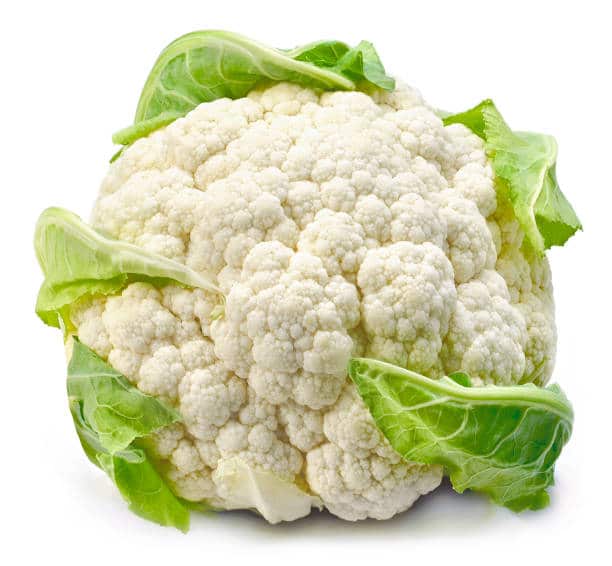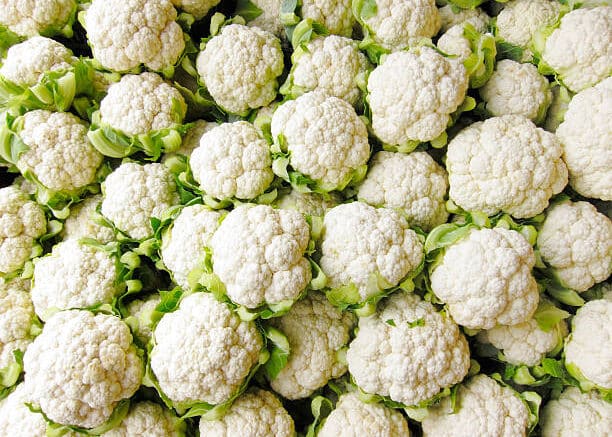Is Cauliflower Good for Diabetes – Overview
Cauliflower is a plant that grows in cool weather at low temperatures to grow crowns. It will grow poorly when the plants are pressured by dryness, they grow best in wet soil.
Cauliflower plants are prone to a series of leafy bugs, including cauliflower loopers, cabbage whites, and caterpillars, and clubroot, a fungal infection.
Cauliflower is a perennial vegetable with broad, spherical leaves similar to spinach and kale. The distal clump creates a solid, succulent head, which is an undeveloped clump of flowers.

Is Cauliflower Good for Diabetes
Before harvesting, the large leaves are sometimes linked together to cover the curd and avoid browning.
White cauliflower is the most popular commercial variety, but there are also purple, orange, green, and brown varieties.
The plants produce seeds in siliques, which are dry shells with yellow flowers.
What is Diabetes
Diabetes is a long-term disease that influences the way your body converts food into energy.
The majority of the food you eat is converted to glucose (the human sugar) and absorbed into the circulation.
When your blood glucose levels rise, the pancreas is prompted to produce and release insulin. Insulin is a key that allows blood glucose to be taken by your body’s cells and used as energy.
There are two types of diabetes, both type 1 usually present in children and type 2 that present in adults.
What is the Nutritional Content of Cauliflower?
Cauliflower is a very beneficial vegetable that is rich in varieties of nutritional elements that help with good health and wellbeing.
The table below shows the nutritional composition of cauliflower per 100g:
| Content | Amount |
|---|---|
| Calories | 25 Kcal |
| Total Fat | 0.3 g |
| Saturated Fat | 0.1 g |
| Cholesterol | 0 g |
| Sodium | 30 mg |
| Potassium | 299 mg |
| Total Carbohydrates | 5 g |
| Dietary Fibers | 2 g |
| Sugar | 1.9 g |
| Total Protein | 1.9 g |
| Vitamin C | 48.2 mg |
| Calcium | 22 mg |
| Iron | 0.4 mg |
| Vitamin D | 0 g |
| Vitamin B6 | 0.2 mg |
| Vitamin B12 | 0 g |
| Magnesium | 15 mg |
Is Cauliflower Good for Diabetes?
Cauliflower has a low glycemic index (which measures the overall increase in a person’s blood glucose levels after consuming the meal) and provides essential vitamins and minerals.
Therefore, eating cauliflower is both safe and healthy for any patient with diabetes.
However, you have to ask your doctor about the exact amount of cauliflower you can eat depending on your glucose level and other factors affecting the disease.
Dietary Advice with Diabetes
The following are some measures you have to follow that would help to normalize your blood sugar:
1. Avoid Sweet Fruits
Diabetic patients are allowed to eat berries, apples, and pears, but what about sweet tropical fruits like mango, pineapple, and bananas?
Diabetics can eat sweet fruits or fruits with a high glycemic index, provided that the amount consumed is reduced.
Fruits with a low glycemic index can be consumed in greater quantities because they usually require more time to raise your blood sugar.
2. Avoid Starches
We advise you to eat three to four carbs per meal, 45 to 60 grams per meal. For three carbohydrate servings, eat 180 grams of brown rice or 145 grams of white rice, but warn about “brown” alternatives containing sugar.
Although most varieties of brown rice are healthy options, some types of whole bread contain added sugar and a small amount of fiber. Focus your food on quinoa, whole beans, wild rice, and black sage.
3. Healthy snacks
Nuts are an important source of protein and fibers, but it is better to avoid salting from them.
Also eat a sliced vegetable, or one or two pieces of black chocolate containing a good amount of cocoa, and a full-fat yogurt that can be sweetened and marinated through the addition of lotion, strawberries, cranberries, or nuts.
Avoid sweet snacks and juices, and don’t eat them more than once or twice a week. If you’re suffering from high blood sugar, you should completely refrain from it.
Non-Dietary Measures with Diabetes
The following are lifestyle modifications that help to reduce the blood sugar and minimize the effect of high blood sugar:
1. Maintenance of normal weight
Abdominal fat poses a significant risk to health in general and the liver in particular. The presence of fat in the abdomen makes it move to the liver. Because of the grease in the liver, diabetes appears.
2. Regular Exercise
All types of exercise help prevent the development of diabetes, including walking for half an hour.
3. Healthy Diet
In addition to the importance of eating plant-based meals that have a positive effect on health, you should avoid lipids, salt, sugar, and alcohol.
Experts are advised to eat fiber-rich meals such as whole grain products and beans.
These measures and others will help you control your blood sugar and prevent the occurrence of any health risk.
See Also
References
https://www.ncbi.nlm.nih.gov/pmc/
https://www.diabetes.org.uk/guide-to-diabetes/
https://www.thespruceeats.com/
